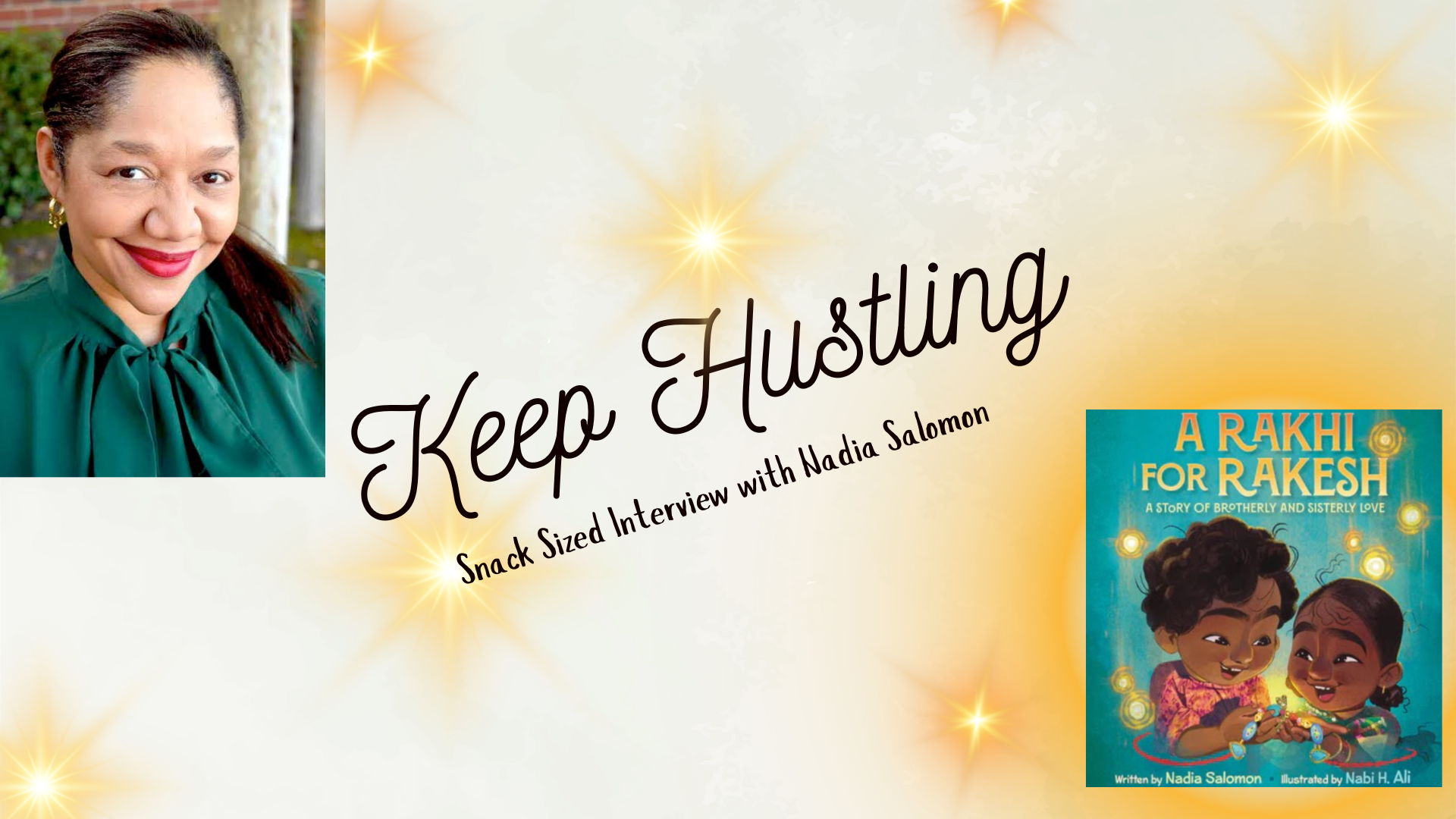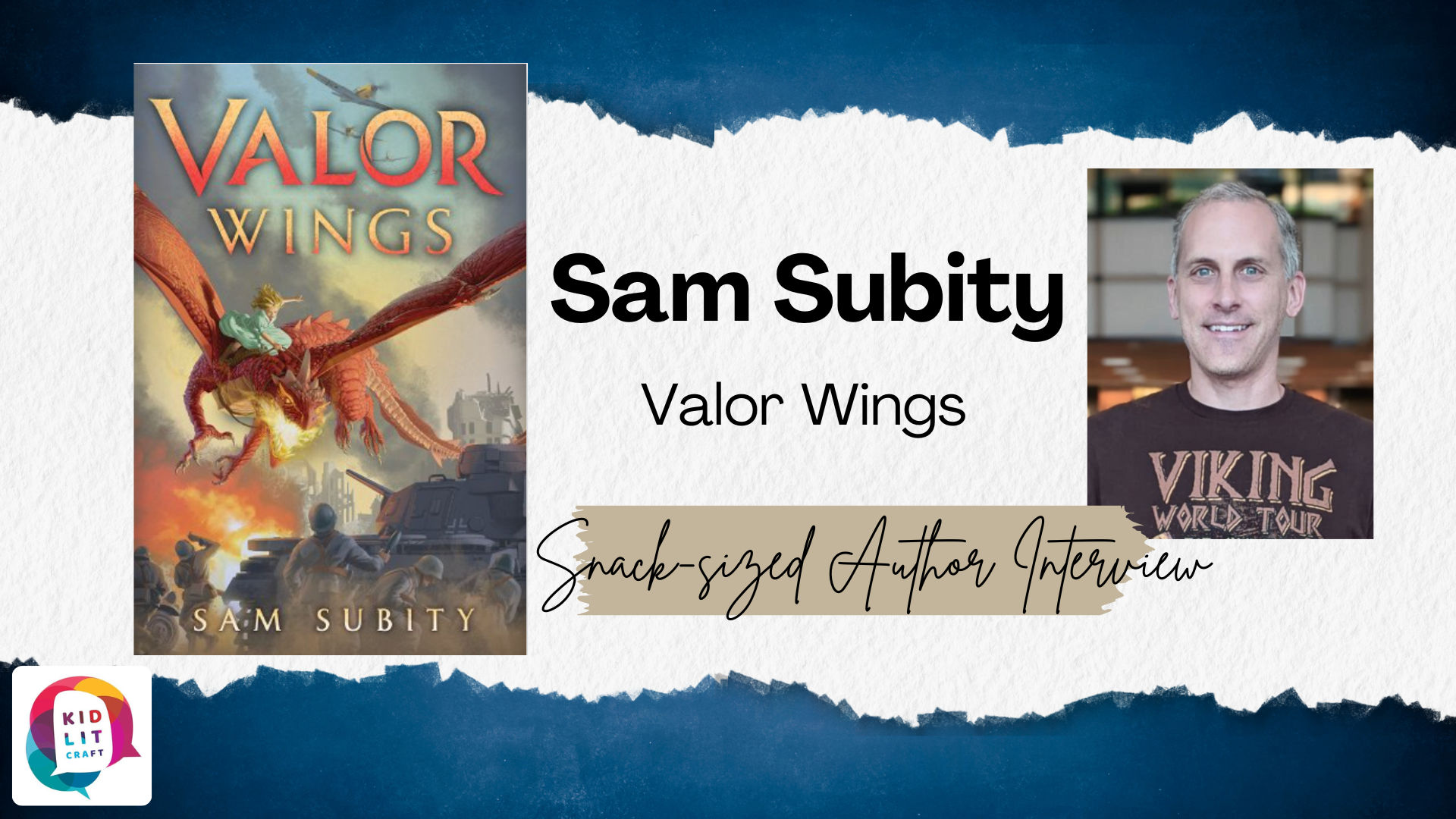Craft Articles
Join us in exploring others’ craft and building our own.
Here you will find explorations of mentor texts – articles that dive into specific craft elements in published books, interviews with authors, and tips on growing and improving as a writer.
Disclaimer: Some posts include bookshop.org affiliate links. Use the links to support KidLit Craft and local bookstores, at no additional cost to you.
Browse the Blog

Sandra V. Feder: The Importance of Play
“Try your hand at many different types of stories and formats. I don't think I would have come up with a unique format for my emotions books if I hadn't already done early chapter books and picture books.”

Miriam Chernick: Enjoy the Process
“I'd tell myself not to sweat the small stuff. There’s a lot to learn about the industry, the editorial process, launching a book, selling a book, and getting feedback in the market. So enjoy the process. Don’t be too concerned about trying to make sure everything goes right since most of that is out of the author’s control anyway!”

Nadia Salomon: Keep Hustling
“Keep hustling. Keep following your arrow, even when no one sees your vision. Rejection still happens, it doesn't define you or the value of your work. Publishing is a subjective industry, until you find people who align with your values and support your creative endeavors.”

Jasmine Warga: Take Risks
“My biggest tip would be to take risks in your art. Think about styles you haven't tried yet. Push yourself out of your comfort zone.”

Sydnie Suskind: Find Your People
“Find your people—the ones you trust as a sounding board, who will be constructive, supportive, and honest. Keep writing. Keep reading other people’s work. And most importantly, keep learning and challenging yourself.”

Tirzah Price: Don’t Stop Challenging Yourself
Keep writing the next book, and don't stop challenging yourself! When you're a new author, there's so many fun "firsts" and great experiences that come with being published and you should definitely enjoy them! But it's important to remember why we write in the first place and to challenge yourself creatively along the way.

Martha Brockenbrough: Staying Curious
“In the many years I’ve worked at this craft, I’ve come to believe my superpower is curiosity. If you can remain curious about a subject or curious about a writing form, you can persist with your attention until you have learned something. Stay curious, friends!”

Jessie Janowitz: Give Your Narrator a Secret
“Understanding your main character’s backstory is essential to the first-person voice. We filter the world through our unique personal experiences, . . . we refer to places we’ve been, people we’ve met, food we’ve eaten, etc. If we don’t know our narrator’s history, we can’t begin to know the language they’d use to describe it.”

Sam Subity: Keep Writing!
“The inspiration for Valor Wings came from my daughter's nightstand. One day the two books on top were Anne of Green Gables and Wings of Fire. Just for fun, I started concocting some scenes that merged the two into a story about a great granddaughter of the famous Anne who led a squadron of dragon riders in World War 2. So my working title for Valor Wings for a long time was ‘Anne of Green Dragons.’”

How to Write a Big Emotional Scene: Fault Lines by Nora Shalaway Carpenter
Nora Shalaway Carpenter’s YA novel Fault Lines is a study in contrasts. It’s the story of Viv, a high school senior who lives in rural West Virginia, and Dex, a boy in her grade who moves to town. Viv lives a middle class life; Dex is only recently out of extreme poverty. Viv is anti-fracking; Dex’s mom works on the pipeline. But Viv and Dex are drawn to each other. This dual point of view novel barrels straight toward a huge conflict between these two characters. Carpenter handles the moment of greatest conflict with deft hands. Let’s take a look at how she helps readers connect with the characters’ emotions without getting maudlin.

Crafting a Story of Contrasts: A Q&A with Nora Shalaway Carpenter, author of Fault Lines
I needed to write what felt right and natural to me, even though I was worried my agent and editor (and readers) might think it was weird. . . . I have always felt a deep, almost spiritual or magical connection with the natural world. That’s what was coming through in my writing.

In Summary: Point of View
The 4th post in our "In Summary" series, collecting our best posts on point of view. These posts detail how different authors approach point of view, and tools they use to craft each point of view effectively.

Picture Book Mentor Texts: Making 2nd Person POV Sing in How To Wear a Sari
HOW TO WEAR A SARI is a charming how-to guide for wearing a colorful, twinkly, silky sari. It’s also a great mentor text for how to write an excellent picture book in 2nd person.

Follow Your Curiosity: A Q&A with Darshana Khiani
Follow your curiosity. Write and draw what you like. Know there are no set rules but it is important to understand the current book market. Picture book writing is all about how strong the concept is and then how well it is executed.
Creating a Character Readers Love: Luck of the Titanic by Stacey Lee
Since Lee uses first-person point of view to tell her stories, it’s her main character’s voice that’s in the driver’s seat. Reading her novels is a masterclass in how to do first-person narration well. However, you can use these techniques with third-person and even with omniscient narration. It’s all about elevating your prose to do more than just tell the reader what’s happening.

Making a Mystery that Mystifies: Part 2
Good mysteries are fun because they keep the reader guessing. One of the most important keys of writing a mystery is writing the story so the reader can try to solve it. Nothing’s more annoying than not being given clues to solve the mystery unless those clues are so obvious that there is no real mystery to be solved. The best way to achieve both goals is to give quality clues but constantly keep the reader guessing so they don’t recognize the clues for what they are.

SUMMER RETROSPECTIVE: CHANGING POINTS OF VIEW IN THE PENDERWICKS
Birdsall establishes a strong narrative voice for her omniscient narrator in the opening pages, and then seamlessly slips from one point of view to another without losing the reader.

Letting Your Readers In on Something Your Narrator Doesn’t Know: The Lonely Heart of Maybelle Lane by Kate O’Shaughnessy
Kate O’Shaughnessy creates secondary character Tommy O'Brien in such a way that, even though the book is in Maybelle’s first person point of view, readers know things about Tommy that Maybelle doesn’t.
Retro Post #3: Characters to Love–and Telling Them Apart–in THE PENDERWICKS
More important than their differences and easily distinguished voices, these sisters work together as a team. And arguably, it’s this aspect of the novel that makes it so appealing. We see their cohesiveness in the initial reminiscence of the opening, but we also see it through their interactions and their family codes and practices.


